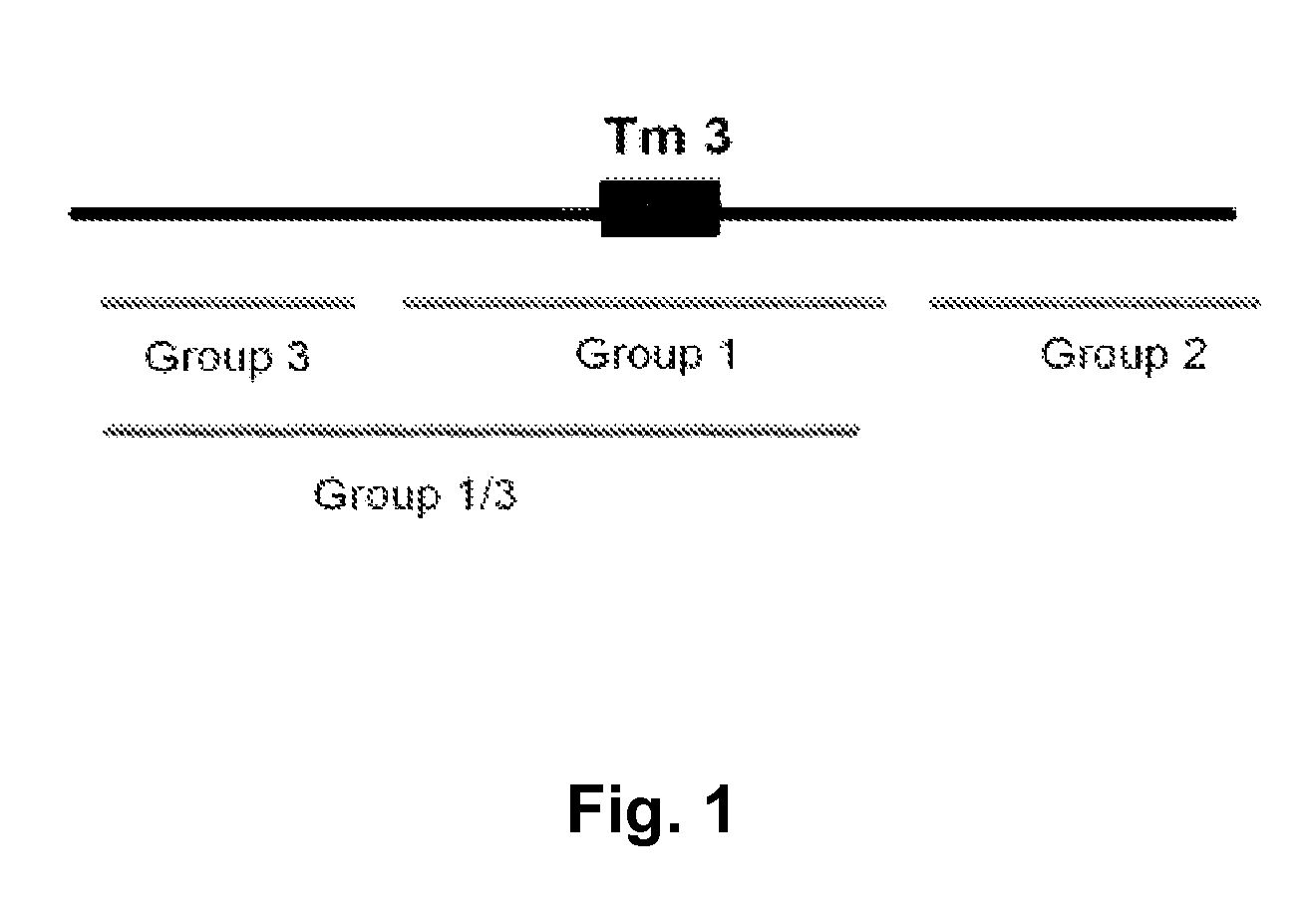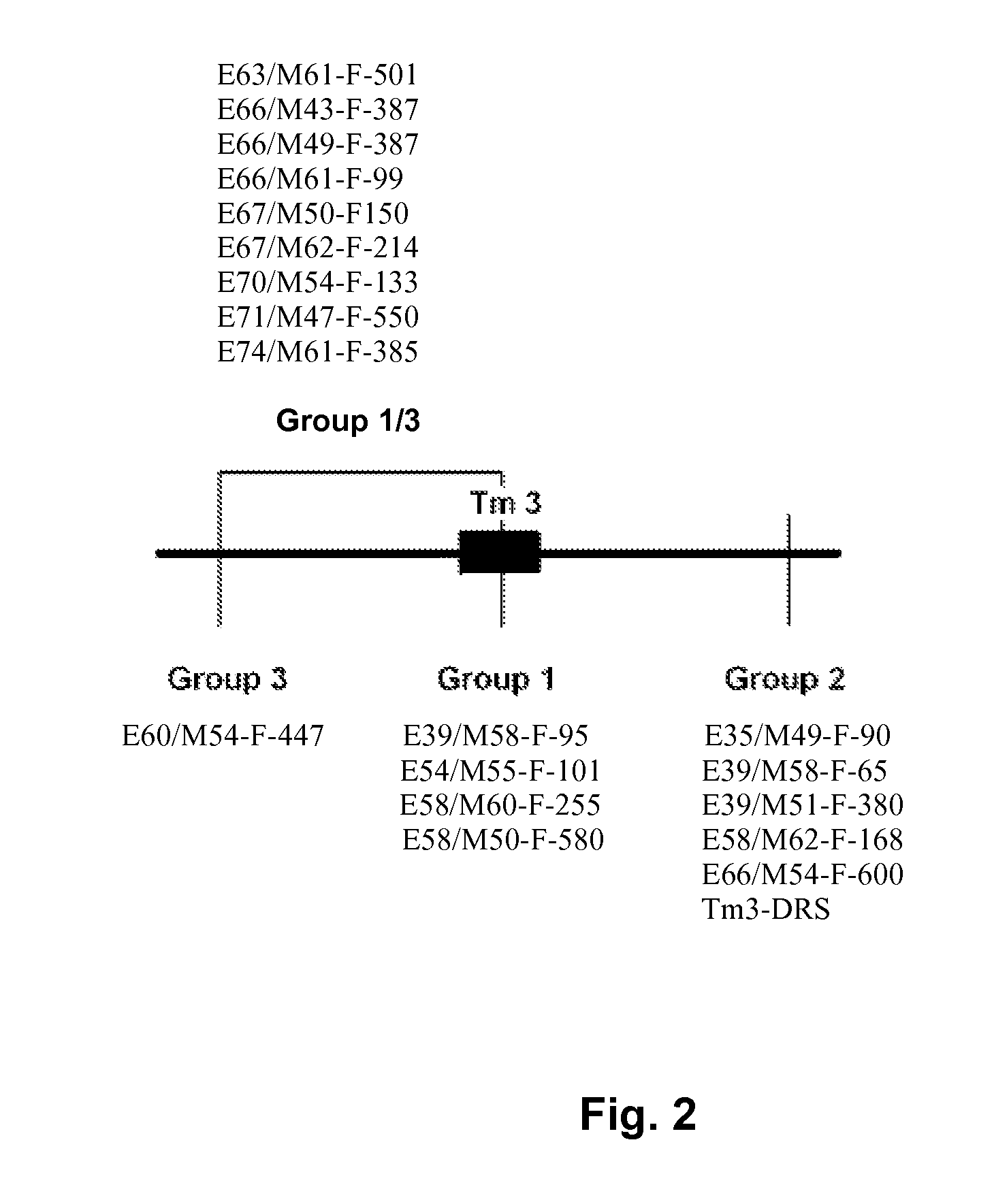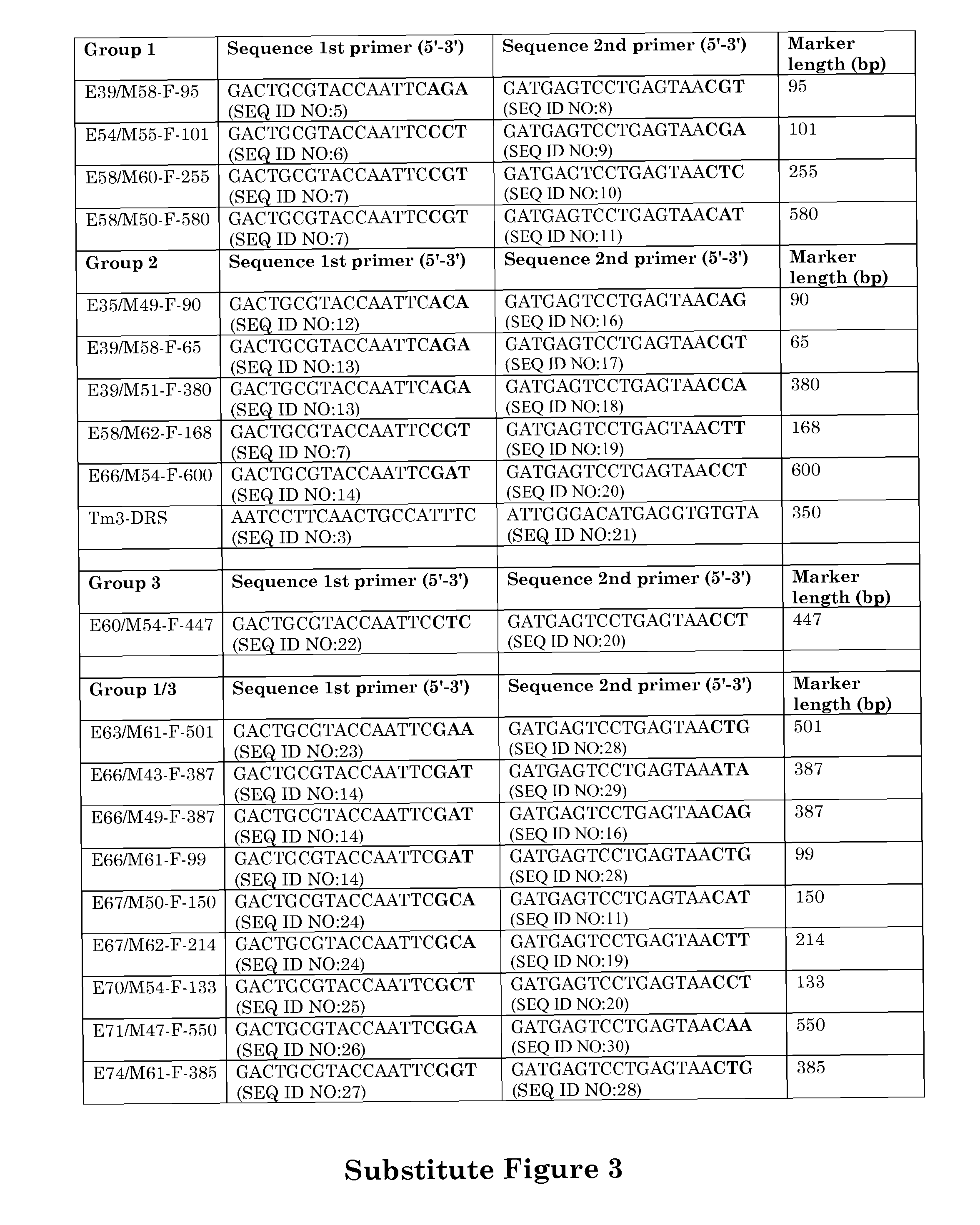PMMoV resistant capsicum plants
a technology of capsicum and resistance, applied in the field of disease-resistant plants, can solve the problems of affecting the marketability of fruits, affecting the growth rate of capsicum, and affecting the predictability of crosses, so as to reduce the size of the genomic introgression
- Summary
- Abstract
- Description
- Claims
- Application Information
AI Technical Summary
Benefits of technology
Problems solved by technology
Method used
Image
Examples
example 1
L4 Resistance Markers in Resistant and Susceptible Pepper Plants within the Same Variety
A linkage map of the L4-locus was produced by Keygene (Wageningen, The Netherlands). The region where the L-locus was mapped was located on the telomere of chromosome 11-south (Lefebvre et al., 2002).
Markers around this locus could be divided in four groups. The position of the different groups linked to the L4 locus is shown in FIG. 1. Each group contains a number of markers, within each group no recombination was found. Orientation of the linkage map towards the remainder of the chromosome is unknown. The markers present within each group are shown in Table 1.
TABLE 1Overview of markers within respective groups.Group 1(L4 allelespecific)Group 1 / 3Group 3Group 2E39 / M58-F-E63 / M61-F-501E60 / M54-F-447E35 / M49-F-90 95E54 / M55-F-E66 / M43-F-387E39 / M58-F-65101E58 / M60-F-E66 / M49-F-387E39 / M51-F-380255E58 / M50-F-E66 / M61-F-99E58 / M62-F-168580E67 / M50-F-150E66 / M54-F-600E67 / M62-F-214TG036E70 / M54-F-133E71 / M47-F-550E74 / ...
example 2
Development of Non-Segregating Sylvia Variety
To develop a non-segregating variety Sylvia, individual plants of the resistant parental line (line 4578) were crossed to plants of the susceptible parent. The occurrence of segregation of L4 resistance was evaluated in the resulting individual F1 populations. Results are listed in Table 4.
Line 6636 was obtained by selfing of plant no. 4578-8. Individual plants of line 6636 are listed more than once because these plants were used as male on different (but related) susceptible female lines.
None of the plants of line 4578 resulted in a completely resistant F1. However, by selfing line 4578 (vide line 6636) it was possible to find lines that transferred the resistance gene for 100%. In 4 out of 10 cases, this resulted in a completely resistant F1. The segregation of the F1 derived from plant no. 6636-4 shows a pattern that is different from the other lines. As shown in Table 4, there is variation in the number of resistant plants in the segr...
example 3
Development of Non-Segregating Manito Variety
A similar approach as described in Example 2 was followed to develop a non-segregating Manito line. Plants of the resistant parental line were individually crossed with plants of the susceptible parent and the segregation in the individual F1 populations was evaluated. Results are listed in Table 6. All plants that showed low fertility (SNFD phenotype) were removed before crossing, these plants are listed in Table 6 as “not tested”. Low fertility was initially not observed in plant no. 0025-5 but appeared later to be present.
TABLE 6F1 segregation of Manito, derived from individual plants (first screening)Plant no. ofNo. ofNo. ofresistantresistantsusceptibleparentF1 plantsF1 plants0021-139110021-234160021-334160021-439110021-5not testednot tested0021-638120021-722280021-8not testednot tested0021-930200021-1034160022-1not testednot tested0022-240100022-342 80022-439110022-540100022-631190022-739110022-840100022-935150022-1035150023-141 9002...
PUM
| Property | Measurement | Unit |
|---|---|---|
| temperature | aaaaa | aaaaa |
| temperature | aaaaa | aaaaa |
| speeds | aaaaa | aaaaa |
Abstract
Description
Claims
Application Information
 Login to View More
Login to View More - R&D
- Intellectual Property
- Life Sciences
- Materials
- Tech Scout
- Unparalleled Data Quality
- Higher Quality Content
- 60% Fewer Hallucinations
Browse by: Latest US Patents, China's latest patents, Technical Efficacy Thesaurus, Application Domain, Technology Topic, Popular Technical Reports.
© 2025 PatSnap. All rights reserved.Legal|Privacy policy|Modern Slavery Act Transparency Statement|Sitemap|About US| Contact US: help@patsnap.com



